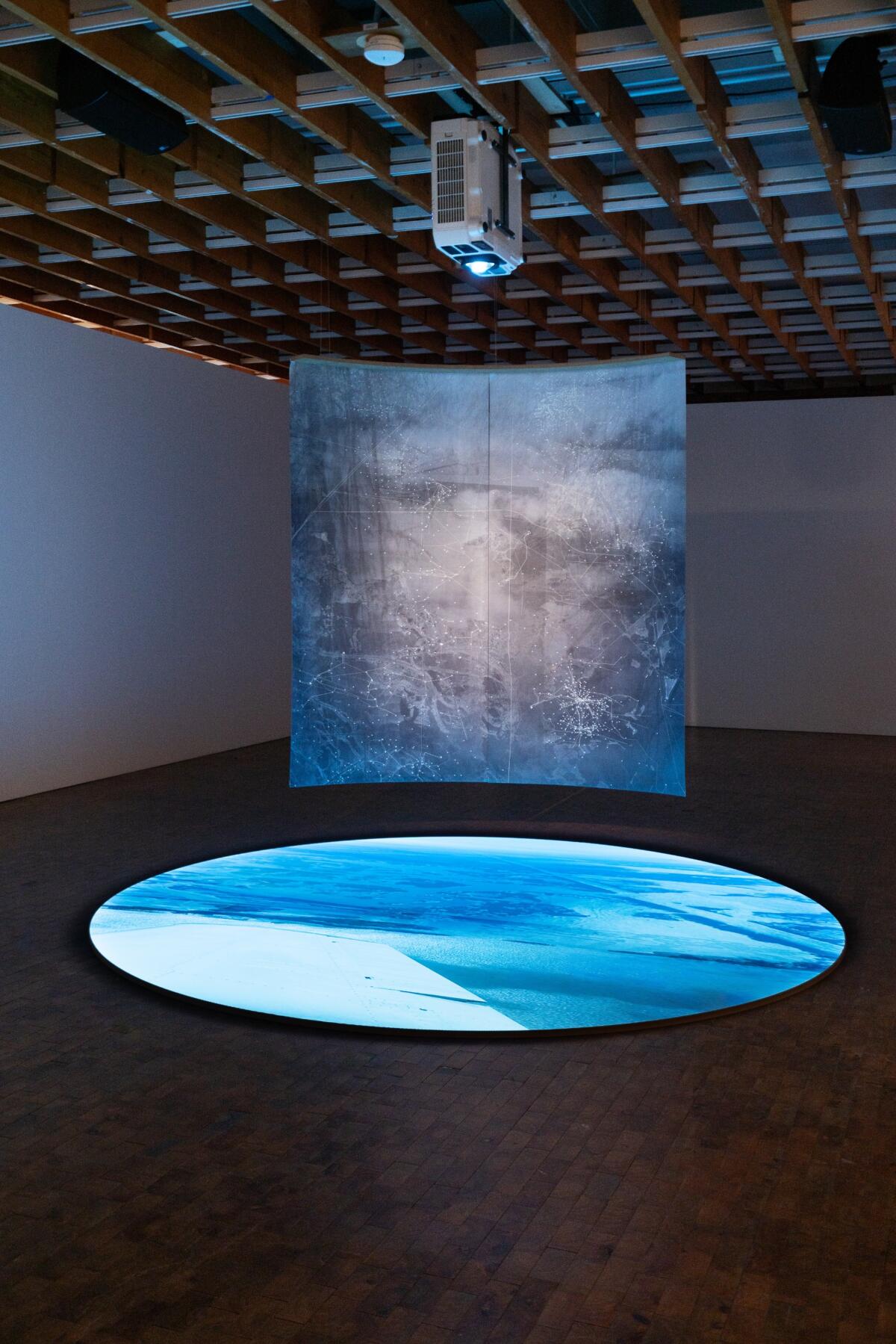
The Berlin Biennale, under the title Still Present!, curated by artist and intellectual Kader Attia, addresses nothing less than the yoke of colonisation. Fascism is the violence exercised by the colonisers that has returned to the old continent under the mask of modernism, Attia explains in the catalogue’s introduction. The weight of this statement casts a dense shadow over the entire event and its six exhibition venues; coming to terms with the traumas of this world in a heated cultural capital is a difficult but not impossible task.
At least that is the assumption of the six-member curatorial team, which in addition to Attia also includes Đỗ Tường Linh from Vietnam, Marie Helene Pereira from Senegal, Rasha Salti, who works in Lebanon and Germany, Noam Segal, who lives in New York, but studied in Jerusalem, and Ana Taixeira Pinto from Berlin, who recently resigned from her post in support of the open letter written by Iraqi artists in response to Jean Jacques Lebel’s controversial installation Poison Soluble. The places where the individual curators live and reside were not insignificant in the selection of artists participating in the exhibitions and events.
The Berlin Biennale is known for showing art in unusual places, and this time is no different: in addition to renowned museums and galleries, the former headquarters of the GDR secret service and the project “Dekoloniale – Erinnerungskultur in der Stadt [Decolonial – Remembrance Culture in the City]”, are also included in the exhibition. In each building, the central theme of the Biennale, decolonisation, is dissected with different means: non-Western feminism at the KW Institute for Contemporary Art, indigenous ecologies at the Akademie der Künste, Hanseatenweg, or resistance to technological surveillance at the Stasi headquarters.
The keyword for decolonisation, according to the Algerian-born French curator, is “repair”, something that goes beyond simple restitution. At the latest since the presentation of the installation The Repair, from Occident to Extra-Occidental Culture at documenta 13, the artist-curator is not only concerned with the return of stolen art objects to their countries of origin, but with the abolition of the Western concept of modernity itself. He accuses it of hegemonic ‘universalism’ that dominated the imagination of the world in the previous century and affects the present in the form of increasing nationalisms, surveillance technologies and a progressing climate catastrophe. Attia’s practice often refers to the past, which manifests itself in the present through wounds, cracks, but also the typical Western denial. He warns that the repressed past always returns. Therefore, the curator-psychoanalyst proposes confronting trauma by naming it and then resisting practices of domination. He calls for a collective action that dismantles the world constructed after the Western image. This takes the form of multiple, emancipatory narratives, sometimes coming from the very center, though not always speaking in the interests of the oppressed, as the situation around installation Poison Soluble depicting the enlarged, tortured bodies of Iraqi detainees at Abu Ghraib by US soldiers, clearly demonstrates.
An important task the Biennale sets for itself is to provide a platform for decolonial feminism, hence the works in KW Institute for Contemporary Art that speak in women’s voices: A film essay by Mónica de Miranda on the Angolan guerrillas and the revolutionary role of water, precisely the Kwanza River, in the struggle for independence; Ariella Aisha Azoulay’s installation Natural History of Rape, which shows the history of rape as a “natural” and universal weapon of war – here rather selectively, as it is only illustrated by the testimonies of German women during the Second World War – or Zuzanna Herzberg’s work, which recalls the figures of Jewish women fighters who took part in the Warsaw Uprising. Herzberg’s installation is one of three works in the Biennale that take an Eastern European perspective. This modest representation of artists from this part of the world may suggest that there is only Western imperialism in the decolonial perspective, which here manifests itself as the relationship of the prosperous North (Europe without the East-West divide and the US) to the exploited South. The hegemons such as Russia or China are not given any space or attention here. Thus, the exhibitions mainly show the perspectives of artists from Vietnam, India, the Middle East, North Africa, Sudan, but hardly from former German colonies (Namibia, Tanzania, Burundi) or Eastern Europe and East Germany. Astonishing is the complete absence of artists from Ukraine and Belarus, countries that are only a day’s journey away from Berlin, where in recent months revolution (Belarus) and war (Ukraine) have broken out and which, together with Poland, Romania, and the Balkans, represent a reservoir of cheap labour for Germany and the entire Western world, as the period of pandemics and the subsequent lockdowns have clearly shown. Is the unequal relationship between the European states too complex a topic for the biennale? Are they simply located too close to find an appropriate perspective which, on the one hand, does not unreflectively adopt postcolonial discourses developed primarily in the English-speaking world and, on the other hand, acknowledges the differences that undoubtedly exist? How can one talk about inequality without reinforcing the racialising ethnic differences enforced by systems of domination?

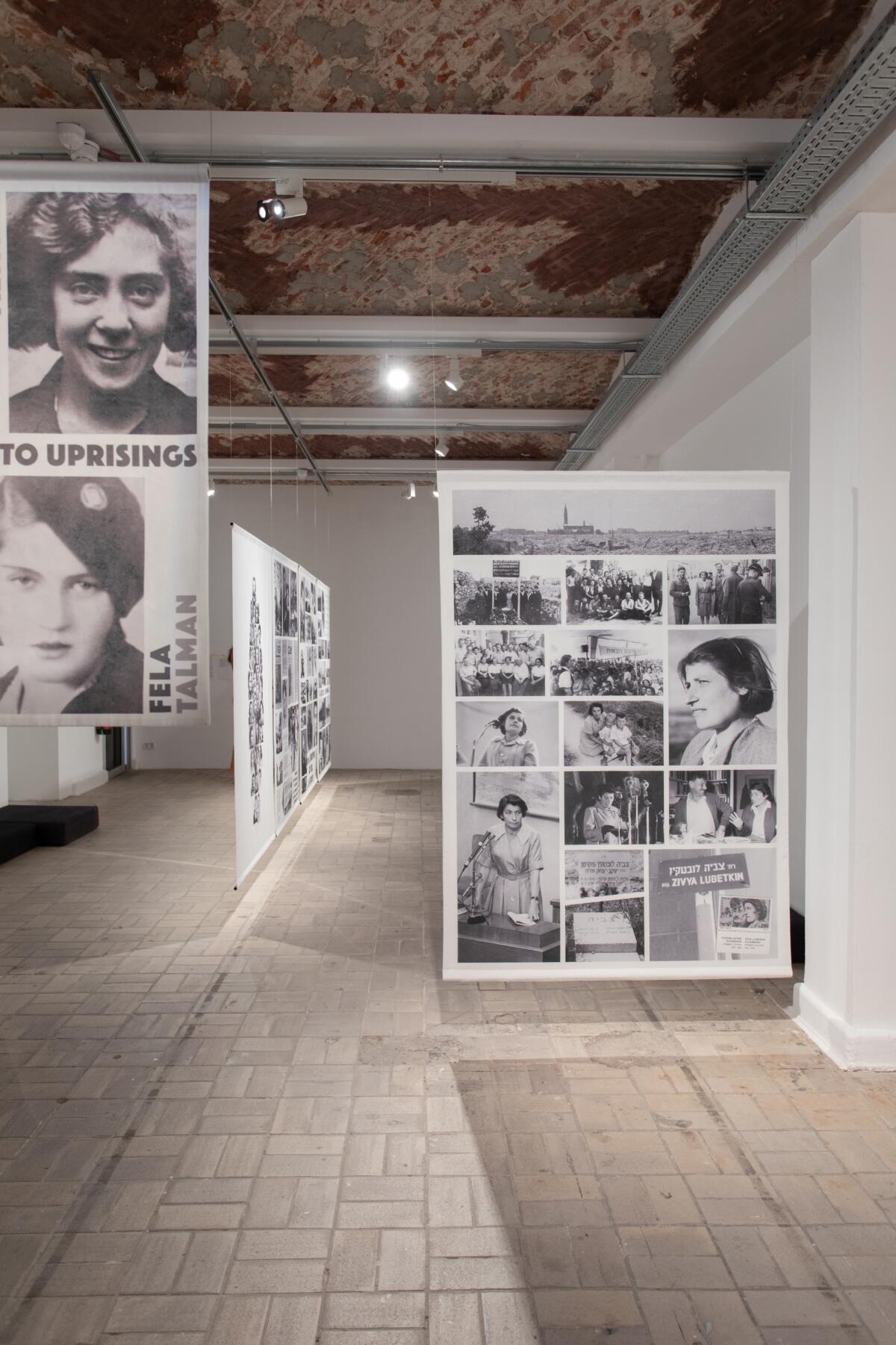

In such a short text I am unfortunately not in a position to delve into all the possible answers to the questions posed, but in order to give an idea of the post-socialist and post-transformation perspective I will focus on the works of three of the four Eastern European artists who caught the eye of the Biennale’s curatorial team, and these are the already mentioned, Zuzanna Hertzberg, Mila Turajlić, and the duo Marta Popivoda and Ana Vujanović. Coincidentally, the works of all the Eastern European women artists are shown in an exhibition dedicated to herstories arranged in the Kunst Werken. Thus, in an installation by Zuzanna Hertzberg, a Polish artist of Jewish origin, one can see and read about the fate of the Jewish women fighters who participated in the Warsaw Uprising and organised resistance in the concentration camps. Hertzberg’s practice is based on working with archives, from which she draws information about the heroines in her stories. She communicates these in the form of spoken performances and creates biographical banners and textiles based on them, five of which can be seen in the exhibition at KW. In addition to telling feminist stories, Herzberg is also a painter and engages herself in social activism that focuses on reproductive justice. She does this in a country where two years ago, the right to abortion was drastically curtailed, bringing hundreds of thousands of people into the streets. So for the artist, women’s solidarity and self-organisation are not just issues from the past, but what gives strength and support to struggles in the present.
Alongside Hertzberg’s installation, there is a work by Mila Turjlić, a documentary filmmaker working in Belgrade and Paris. Turjlić, author of the award-winning film Cinema Komunisto and the documentary film The Other Side of Everything, dedicated to her persecuted, political activist mother Srbijanka, prepared for the Biennale an installation devoted to the Serbian director Stefan Labudović, who was designated as Tito’s director. He was sent by the Yugoslav president to Algeria, Angola, and Tanzania in 1959 to film the struggles for independence in these former colonies, which he saw as an expression of transnational, socialist solidarity. Turjlić juxtaposes historical footage with contemporary commentary on Algeria, particularly the protests (HIRAK) against the despotic rule of Abdelaziz Bouteflika. The project is part of a long-term undertaking that she is carrying out with reference to the archive left by the filmmaker, who passed away in 2017. Using various forms of expression (film, performance, installation), Turjlić seeks to understand Tito’s and Labudović’s interest in the emancipation of the former colonies, which in the director’s case was further affirmed by armed engagement. It refers to the so-called “third way” initiated by the Non-Aligned Movement, whose first conference was held in Belgrade in 1961. During the Cold War, Yugoslavia wanted to form a “coalition for peace” together with Asian (India, Indonesia), Arab (e.g. Azerbaijan, Iraq) and North African states, which, as an independent alliance, would not have to submit to the imperial policies of the East (Soviet Union) or the West (USA).

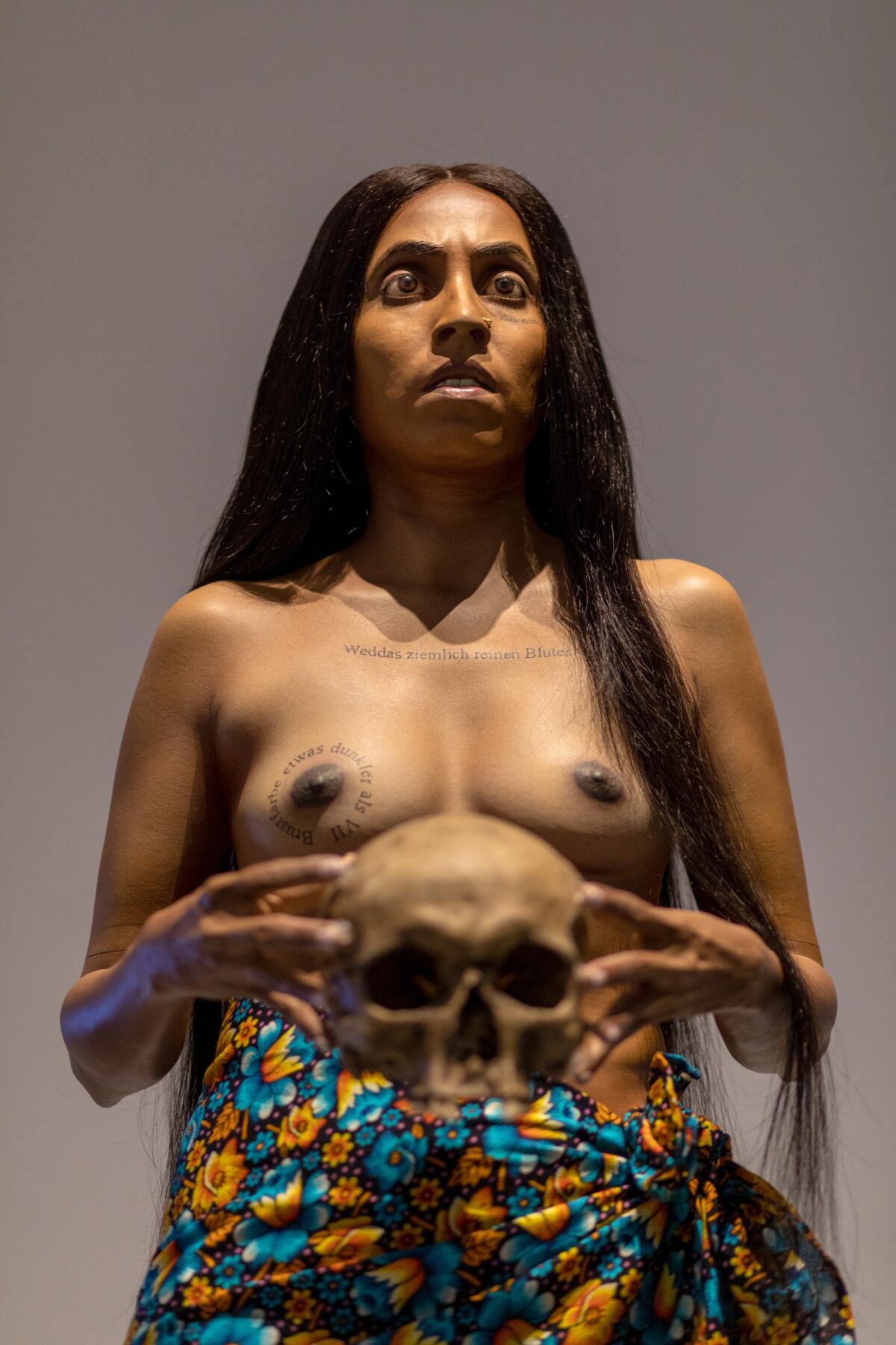


Zooming out from Eastern European topics, a few rooms further on at the same feminist exhibition, is an installation by the multimedia artist Deneth Piumakshi Veda Arachchige from Sri Lanka. The author, who lives in the French Alps, refers directly to the theme of the Biennale by already hinting at it in the title of her project Self-Portrait as Restitution – From a Feminist Point of View (2020). Arachichge’s ancestors belonged to the Adivasi, the indigenous people of Sri Lanka, formerly called Ceylon. The artist’s research and art practice is a response to the curious expeditions of two nineteenth-century Swiss scholars: Paul and Fritz Sarasin, who explored and collected photographic portraits and skulls of the island’s indigenous people. Arachchige spent three years visiting ethnographic museums in search of the traces of her ancestors. Her aim was to return them to their history and the context from which they had been epistemically removed. By establishing a relationship with the people portrayed, the artist questions the “objectivity” of the scientific gaze that has turned her ancestors into mute objects. She rephotographed portraits found in museums in the landscapes of Sri Lanka to bring them back to where they came from. A scale sculptural self-portrait of the artist holding a skull from the Sarasin Collection is also part of the installation. It leaves no doubt that it has ended up in the right hands.
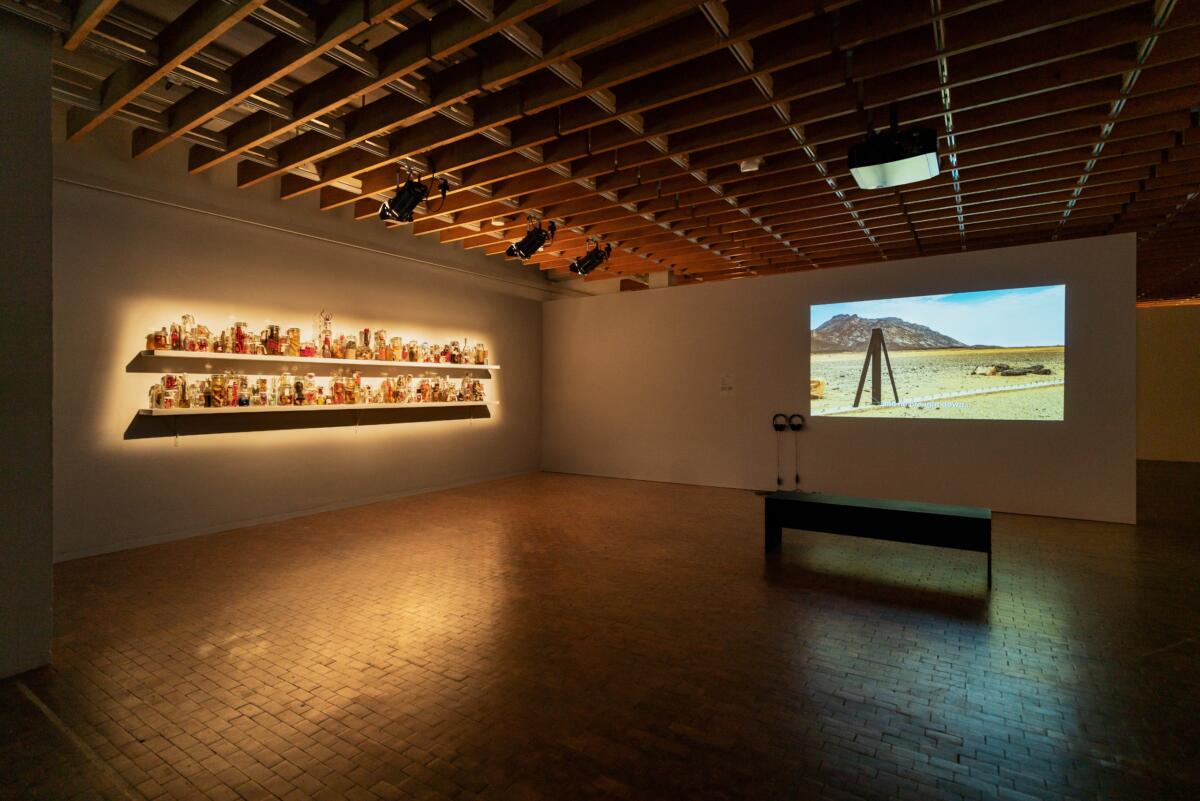
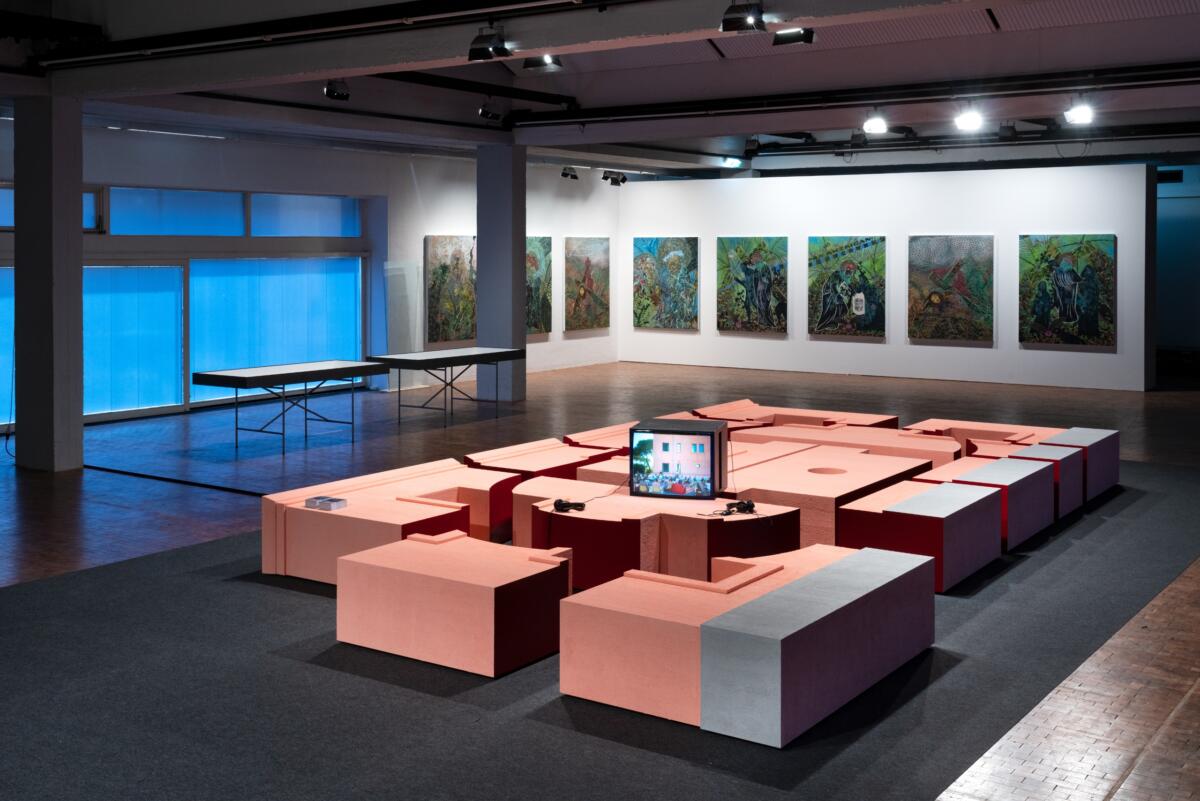
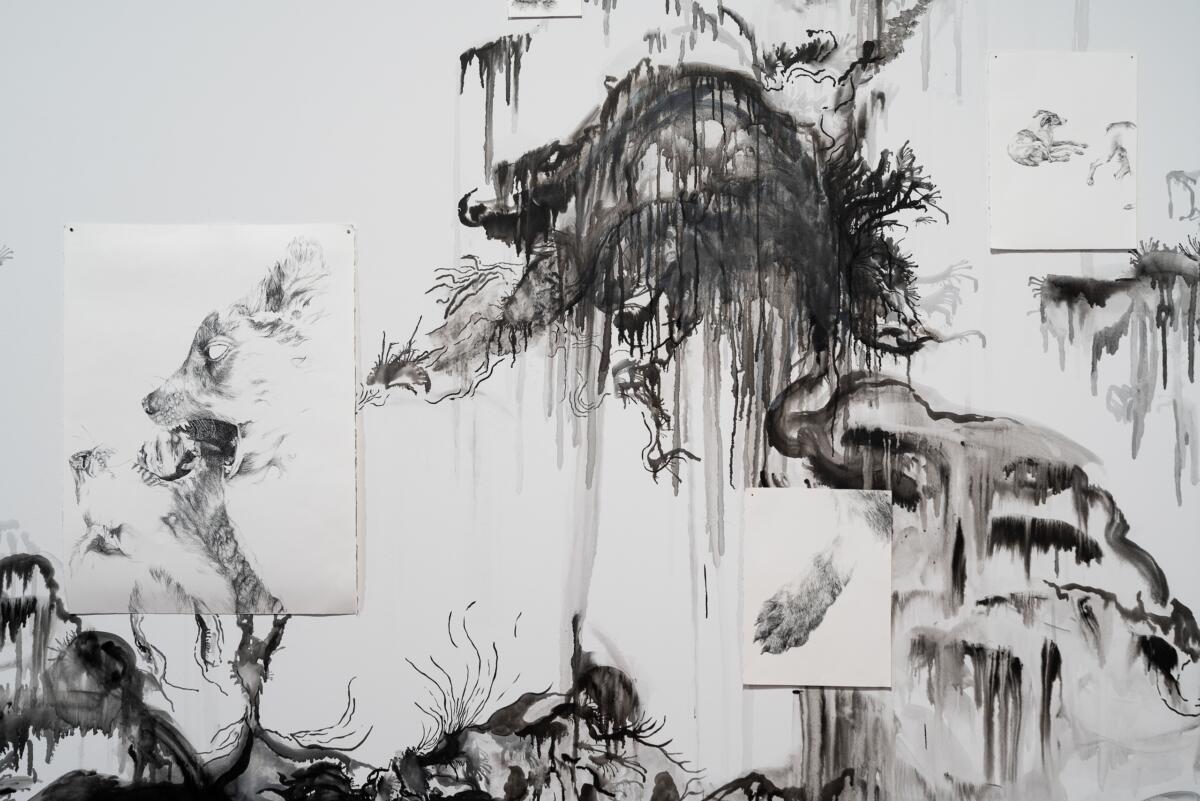
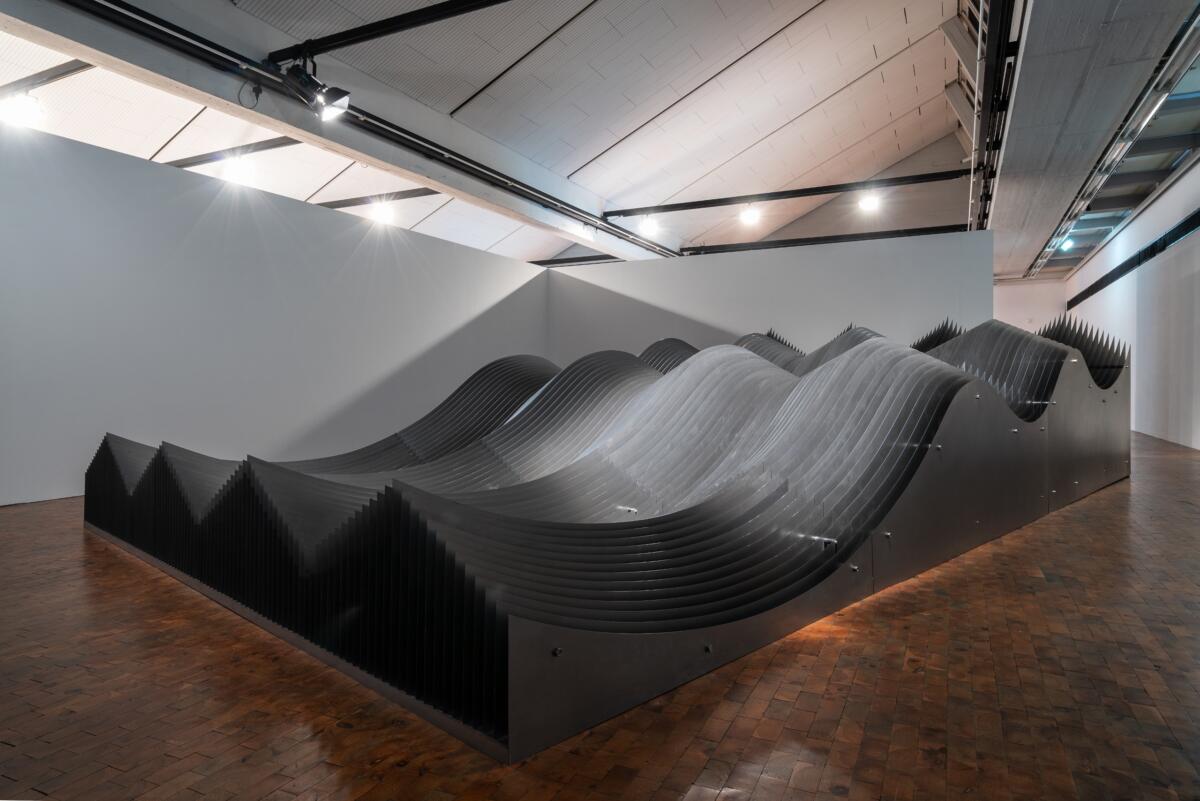
Another important area of decolonisation presented during the Biennale, besides feminism, is ecology. This theme is taken up by the works presented in the exhibition at the Akademie der Künste Hanseatenweg. Decolonial ecology, which turns against Western environmentalism, is the focus of Martinique-born researcher Malcolm Ferdinand, whose lecture was presented at the first discursive event of the Biennale under the title Imperial Ecologies. The scholar, author of Decolonial Ecology: Thinking from the Caribbean (2021), began his talk with the story of black activist Vanessa Nakate, who was erased from a photo documenting a summit in Davos to which young climate activists (all white, except her) were invited. From there, he developed a reflection on ecologies that do not fit into the Western paradigm of “nature conservation”, which may include the parks of Paris, but no longer the Algerian landscapes where France carried out nuclear tests in the 1960s without much ethical problem (see the work 24°3’55 “N 5°3’23 “E by Ammar Bouras, exhibited at AdK Hanseatenweg). Ferdinand, who was educated in Paris and London, focuses, like Attia, on modernity, which he blames for fracturing the world.. According to the author, Western philosophy and religion portray nature as alien and project this alienness onto bodies that do not conform to the patriarchal pattern. In this tradition of violence based on dichotomies, women, Black, the disabled, and other non-normative people are de-subjectified, often enslaved and animalised. Contemporary ecologism, also called the Anthropocene, blurs these differences between people and transforms them into a universalising “we” that reiterates the notion of modernity abstracted from the world.

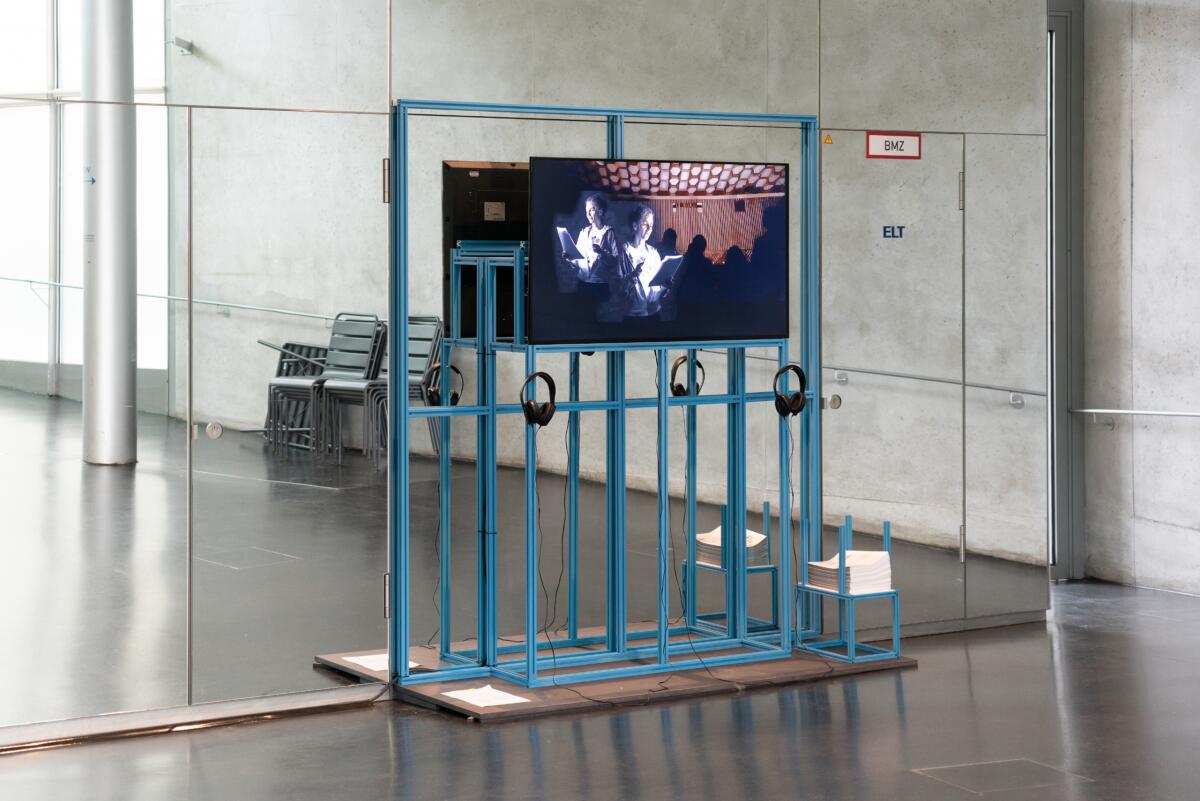

The lecture on ecology from a Caribbean perspective, voices of Iraqi artists, Eastern European feminists and People of Colour aticulated in relation to the Biennale make it clear that all discourses, even those considered progressive, are shaped by Western ways of thinking. One’s positioning in the world can only be understood through a careful analysis of the context in which one lives, challenging the abstraction of dominant discourses. As Audre Lorde wrote, “The master’s tools will never dismantle the master’s house”. Therefore, it is important to point to concrete examples of the practice of environmental and social activism from Southern and Eastern perspectives and fill them with content that dissolves the universalising “we”. Such a position does not repeat the mistake of environmentalism, Anglophone postcolonial studies, and white ecofeminism, which consider themselves as universals, seeking to return to pure nature/subjectivity. A situated, postcolonial perspective aims to deconstruct hegemonic forms of domination in a way that makes space for everything in between, and seeks a “third way” that exists beyond reductionists dichotomies. Therefore, when properly used, the tool of repair appears to be a useful instrument for dismantling colonial schemes, not least because it does not root itself in a position of unbridgeable, and self-exoticising difference.
Edited by Ewa Borysiewicz and Katie Zazenski

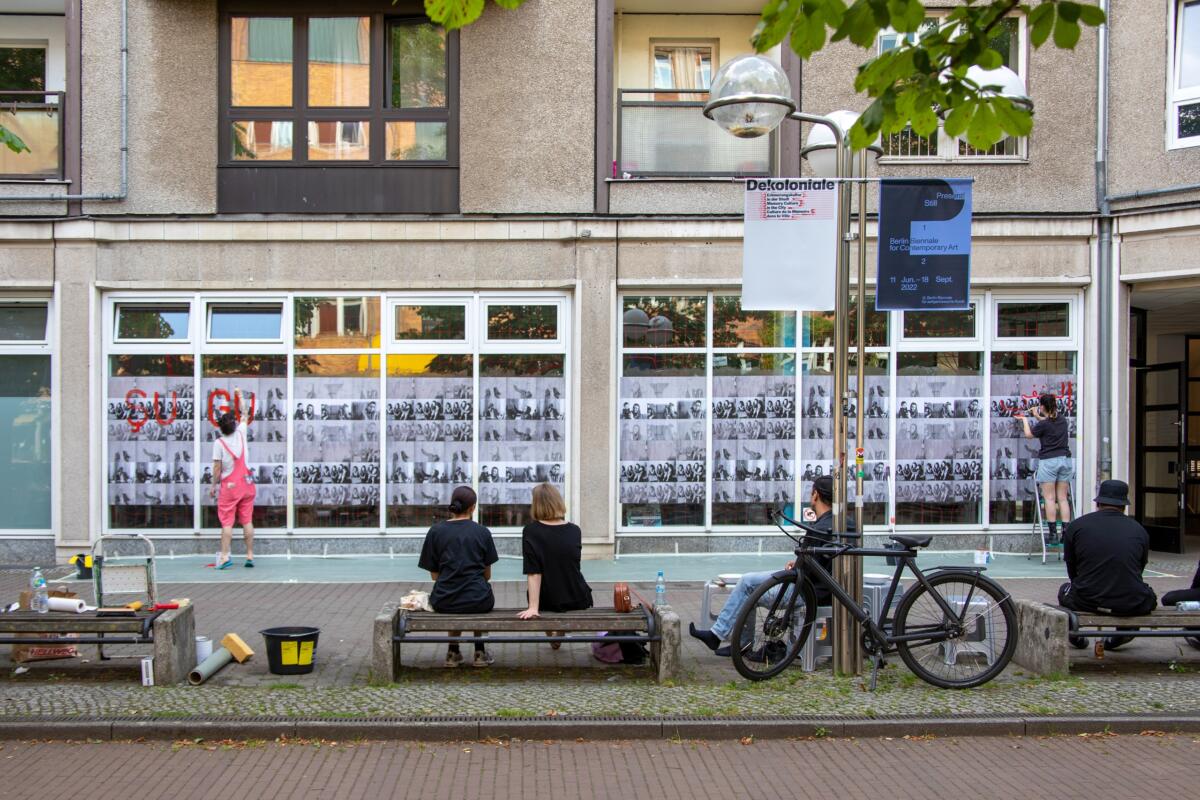


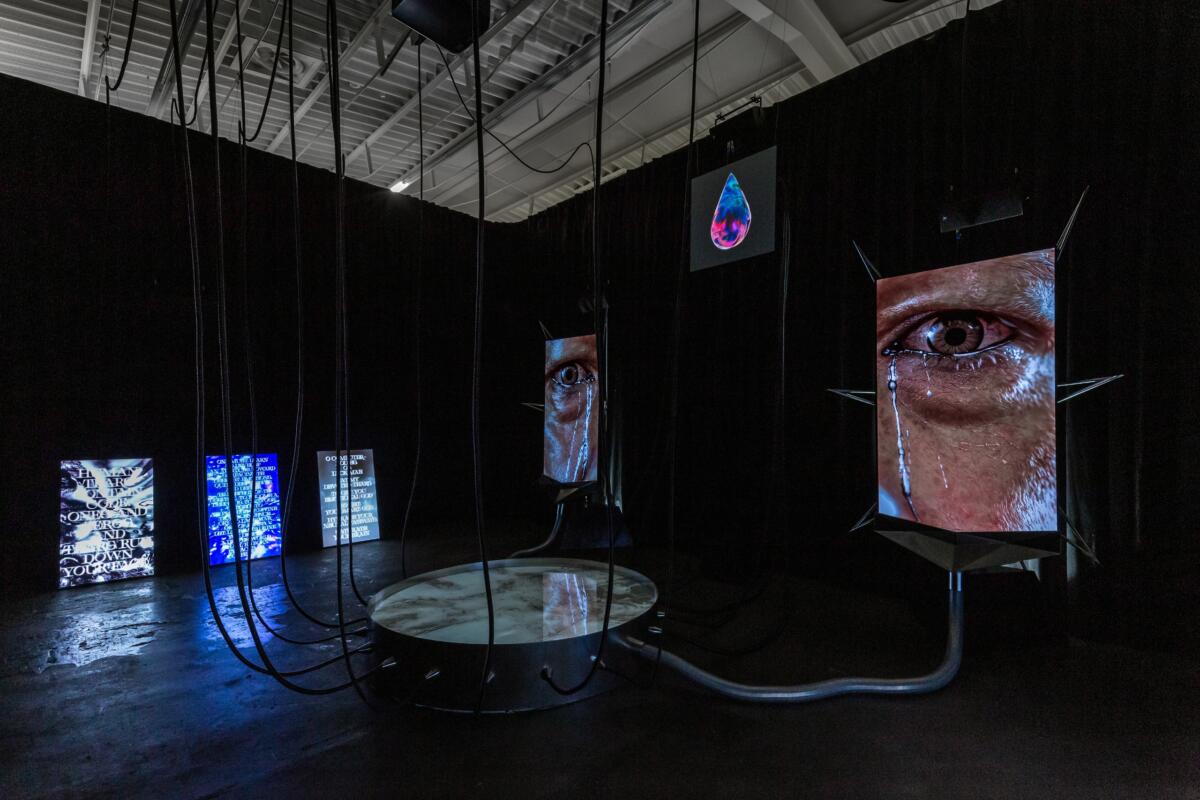

This text was published in an abridged version in “nd” on 3 August 2022.
Imprint
| Artist | Zuzanna Hertzberg, Myriam El Haïk, Marta Popivoda, Ana Vujanović, Tejswini Narayan Sonawane, Nil Yalter, Deneth Piumakshi Veda Arachchige, Mai Nguyễn-Long, Binta Diaw, Ammar Bouras, DAAR – Sandi Hilal and Alessandro Petti, Tammy Nguyen, Florian Sông Nguyễn, Đào Châu Hải, Imani Jacqueline Brown, Elske Rosenfeld, The School of Mutants, Basel Abbas, Ruanne Abou-Rahme, Zach Blas, Noel W Anderson, Praneet Soi, |
| Exhibition | 12th Berlin Biennale for Contemporary Art |
| Dates | 11.06-18.09.2022 |
| Curated by | Kader Attia |
| Photos | Silke Briel, dotgain.info, Laura Fiorio, |
| Index | Alessandro Petti Ammar Bouras Ana Vujanović Basel Abbas Binta Diaw Đào Châu Hải Deneth Piumakshi Veda Arachchige dotgain.info Elske Rosenfeld Florian Sông Nguyễn Imani Jacqueline Brown Kader Attia Laura Fiorio Mai Nguyễn-Long Marta Popivoda Myriam El Haïk Nil Yalter Noel W Anderson Praneet Soi Ruanne Abou-Rahme Sandi Hilal Silke Briel Tammy Nguyen Tejswini Narayan Sonawane The School of Mutants Zach Blas Zofia Nierodzińska Zuzanna Hertzberg |
